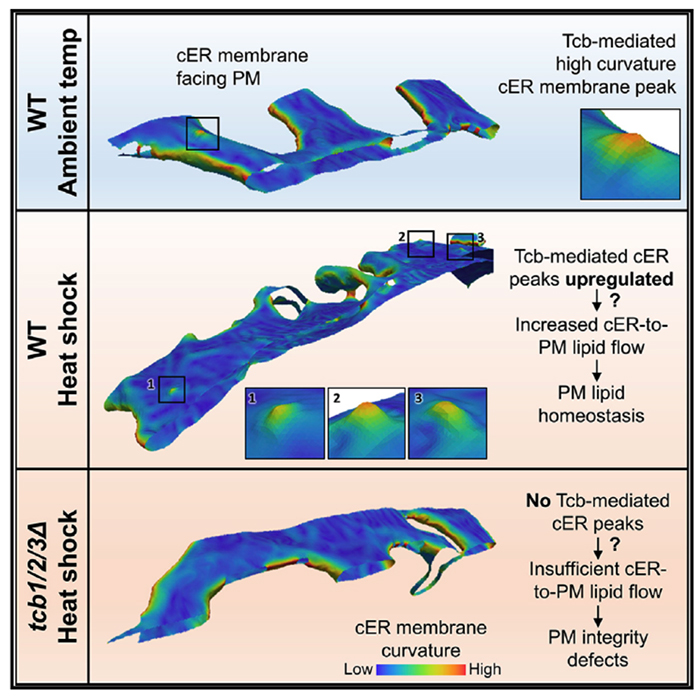A collaborative paper in Developmental Cell for the Stefan Lab
Membrane contact sites (MCS) between the endoplasmic reticulum (ER) and the plasma membrane (PM) play fundamental roles in all eukaryotic cells. In a collaborative research paper in Developmental Cell, the Stefan Lab and colleagues from the Max Planck Institute of Biochemistry, Germany, and the University of Geneva, Switzerland, dissected the functional roles of several proteins implicated in ER-PM membrane contact sites, whose roles were poorly understood. They used cryo-electron tomography to show that ER-PM tethers are key determinants of cER morphology. Notably, Tcb proteins form peaks of extreme curvature on the cER membrane facing the PM. Combined modeling and functional assays sugges that Tcb-mediated cER peaks facilitate the transport of lipids between the cER and the PM, necessary to maintain PM integrity. ER peaks were also present at other MCS, implying that membrane curvature enforcement may be a widespread mechanism to regulate MCS function.
Abstract from the paper:
Membrane contact sites (MCS) between the endoplasmic reticulum (ER) and the plasma membrane (PM) play fundamental roles in all eukaryotic cells. ER-PM MCS are particularly abundant in Saccharomyces cerevisiae, where approximately half of the PM surface is covered by cortical ER (cER). Several proteins, including Ist2, Scs2/22, and Tcb1/2/3 are implicated in cER formation, but the specific roles of these molecules are poorly understood. Here, we use cryo-electron tomography to show that ER-PM tethers are key determinants of cER morphology. Notably, Tcb proteins (tricalbins) form peaks of extreme curvature on the cER membrane facing the PM. Combined modeling and functional assays suggest that Tcb-mediated cER peaks facilitate the transport of lipids between the cER and the PM, which is necessary to maintain PM integrity under heat stress. ER peaks were also present at other MCS, implying that membrane curvature enforcement may be a widespread mechanism to regulate MCS function.
 Close
Close


